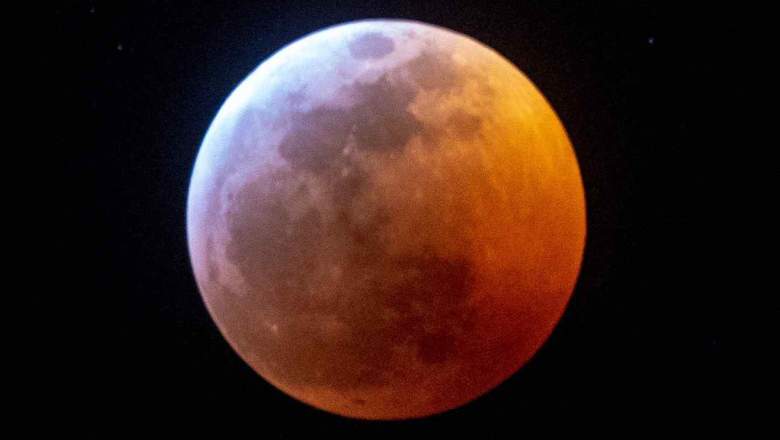
Alunar eclipse is happening in the early morning (or late night hours) tonight. This one will be visible in parts of the United States, although not everywhere. Here are all the details you’ll need on where you need to be to see the Super Flower Blood Moon, including the path of totality and a map of visibility in the United States.
Here Is the Lunar Eclipse’s Map & Path for Tonight
Tonight’s lunar eclipse is a rare total eclipse. The event is called a Super Flower Blood Moon because the full moon is happening in May, NPR reported. It’s a super moon because the moon is at the closest point to Earth and, thus, will appear larger in the sky. It’s called a blood moon because when the moon passes fully in the Earth’s shadow, it will take on a red hue due to refracted light from the Earth’s atmosphere. Having a supermoon and a blood moon at the same time is not a common event.
NASA has provided a map of the lunar eclipse’s path here. You can see also see the photos provided by NASA below. As you can see, it will be visible only in part of the United States. The totality portion of the eclipse will be visible in the Pacific and Mountain time zones, plus in Texas, Oklahoma, Alaska, and western Kansas, NPR reported.
NASA noted about this first map: “A map showing where the May 26, 2021 lunar eclipse is visible. Contours mark the edge of the visibility region at eclipse contact times. The map is centered on 170°15’W, the sublunar longitude at mid-eclipse.”
This next map shows the visibility of totality. NASA noted: “Visibility of the total phase in the contiguous U.S., at 11:11 UTC. Totality can be seen everywhere in the Pacific and Mountain time zones, along with Texas, Oklahoma, western Kansas, Hawaii and Alaska.”
This next map shows areas in the U.S. that can see a partial phase of the eclipse. NASA noted: “Visibility of the start of the partial phase in the contiguous U.S., at 9:45 UTC. This can be seen everywhere (including Puerto Rico) except eastern Pennsylvania, eastern Delaware, New York east of Buffalo, and the rest of New England.”
According to NASA, the totality “will be visible near moonset in the western United States and Canada, all of Mexico, most of Central America and Ecuador, western Peru, and southern Chile and Argentina.”
If you’re in Hawaii, you’ll be able to see the full eclipse from start to finish.
NASA also provided a video explaining where you can see the eclipse, which you can watch here.
What Time Can You Watch the Eclipse?
Here’s a timeline for the various phases of the lunar eclipse and blood moon tonight, according to NASA:
- At 1:46 a.m. Pacific, the eclipse begins.
- The moon enters the darkest part of the Earth’s shadow around 2:45 a.m. Pacific
- At about 3:20 a.m. Pacific, the moon is 50% covered by the Earth’s shadow
- Totality takes place between 4:11 and 4:26 a.m. Pacific
- At about 5:16 a.m. Pacific, the moon is 50% covered by the Earth’s shadow
- The eclipse ends at 5:53 a.m. Pacific
Of course, you won’t be able to see totality unless you’re in the parts of the U.S. listed in the section above.
Another full lunar eclipse in the U.S. won’t happen until May 15-16, 2022. This will be visible from North and South America, Europe, Africa, and parts of Asia. This is another major lunar eclipse known as a blood moon, so this time we won’t have to wait as long to see another one as we did after the last blood moon eclipse.
The next total solar eclipse in the U.S. won’t happen until April 8, 2024. But we won’t see another coast-to-coast solar eclipse in the U.S. until August 12, 2045.
READ NEXT: The latest COVID-19 deaths, cases, and updates


